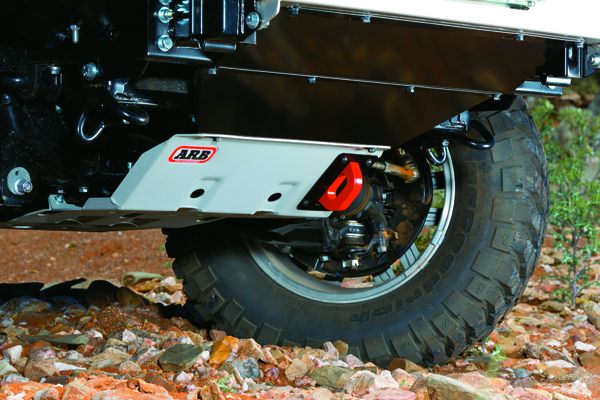To have a properly-engineered recovery point on a 4WD is critical when going remote. However, the lack of standards are concerning and ARB has taken on the challenge.
Instigated by countless customer enquiries, and a lack of industry standards regarding rated tow points, ARB launched an exhaustive engineering program in order to set a new industry benchmark for how recovery points are designed, tested and selected by 4WDers in Australia. ARB’s new recovery point range seeks to address issues surrounding generic tow points and their unsuitability for a range of recovery situations. These issues include questionable and untested mounting locations, confusion regarding the selection of rated shackles and straps, and the inability of generic tow points to safely handle stresses generated by an angled pull during vehicle recovery. ARB now has vehicle specific ARB recovery points available for the pre-2011 Mazda BT50/Ford Ranger, Toyota HiLux, Nissan GU Patrol and Toyota Land Cruiser 70 Series, with more models in the pipeline. Of critical importance in the design stage was the commitment to finding an optimal mounting location for the recovery point on each vehicle. Generic tow points, while rated to 10,000lb or similar, are not vehicle specific. Mounting generic tow points is often left in the hands of the purchaser, who is unable to ascertain whether the surface they have mounted the tow point to can handle the load exerted during a recovery or whether air bag deployment is affected. Each ARB recovery point has been built from the ground up and undergone considerable research and design involving actual vehicle chassis samples and CAD data relating to critical front sections of the vehicle. Dozens of designs were explored, with the more promising models built into prototypes and tested on the actual vehicle chassis using ARB’s various load-and-destructive testing equipment. Some vehicle models demanded very complex mounting systems to ensure fitment did not affect air bag deployment in the event of an accident. But with months of design and testing dedicated to each individual recovery point, ARB’s engineers have ensured that the crash pulse of the vehicle remains unaffected, whilst also ensuring the recovery points are fitted in the optimal location to handle the stresses experienced during vehicle recovery. Crash pulse is the graph or picture of how quickly the vehicle occupant compartment is decelerating at different times during a crash. ARB’s engineers also focussed considerable attention on the development of a recovery train, in which they tested and verified what rated strap-and-bow-shackle size is compatible with the recovery point. This has not only simplified the use of recovery points out on the track; it has increased customer safety and reduced the likelihood of vehicle damage through misuse or incorrect selection of associated recovery point equipment. In doing so, the engineers were able to create a standard across all of the recovery points, with the recommended rated bow shackle for all ARB recovery points being 4.75t, paired with an 8000kg-rated snatch strap. Another important design requirement was the ability of these points to be rated in an angled direction of pull. This has been achieved for angles up to the maximum turn angle of the front wheels of the vehicle. With this requirement came questions of how the snatch strap is attached to the point, and for this reason ARB recovery points have a long slot that allows the bow of the shackle to be fed through and the strap then attached via the pin instead of the bow. This allows the shackle to pivot within the recovery points to avoid side loads on the pin. Coming with a two-year warranty, ARB’s recovery point range is available now from ARB stores and stockists across the country.





